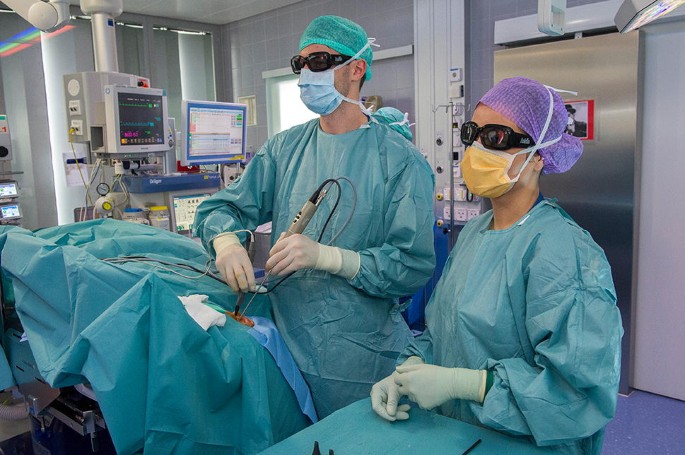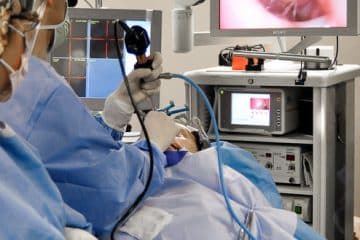Endoscopic ear surgery is a minimally invasive surgical procedure that employs the use of the rigid endoscope to treat ear conditions such as osteoma, otosclerosis, ruptured eardrum, etc.
Endoscopic ear surgery differs from traditional ear surgery in that surgeons access the middle ear through the ear canal rather than through an incision behind the ear in traditional surgery. This causes less pain and results in faster recovery.
During endoscopic ear surgery the surgeon holds the endoscope in one hand while working in the ear with the other. In order to perform this kind of single-handed surgery, different surgical instruments have to be used. Endoscopic visualization has improved due to high-definition video imaging and wide-field endoscopy, and being less invasive, EES is gaining more importance as an adjunct to microscopic surgery.

Types of Endoscopic Ear Surgery
For cholesteatoma
A cholesteatoma is an abnormal, noncancerous skin growth that can develop in the middle section of the ear, behind the eardrum. Surgery for cholesteatoma offers the most advantages for using the endoscope instead of the microscope. Failures in cholesteatoma surgery are most common in certain areas of the anatomy of the tympanic cavity, such as the facial recess, sinus tympani, anterior attic, and the protympanum which are poorly accessed with the microscope.
The endoscope with its ability to see around the corners can visualize certain areas that are notorious for residual cholesteatoma such as the sinus tympani.
For perforated eardrum
Access to the whole perimeter of the perforation is essential for successful treatment of holes in the eardrum. To achieve that, using the microscope, an incision is made behind the ear using the “postauricular approach”.
The endoscope, with its ability to see around the corner, increases the likelihood of performing closures of perforations through the ear canal rather than making large incisions to access the whole perimeter of the perforation.
For otosclerosis
Otosclerosis is a disease that results in fixation of the stapes, which conducts sound to the inner ear. Microscopic stapedectomy, requires some removal of bone, and in some instances, an incision is made to facilitate access. The endoscope’s ability to visualize around corners allows for better visualization of the stapes without needing any bone removal or making an incision.
For access into the Eustachian tube
The Eustachian tube plays the primary role in the pathophysiology of disorders of the middle ear. Access to the proximal part (ear side) of the eustachian tube is limited since most of the existing surgical access is posteriorly through the mastoid cavity.
The endoscope allows the surgeon to reach the protympanum or the bony Eustachian tube and possibly carry out interventions to maintain an open eustachian tube by inserting a dilatation balloon catheter into that area.
Risks and Complications of Endoscopic Ear Surgery
As with any surgical procedure, EES has its own risk of complications. These include:
- Bleeding – There is risk of excessive bleeding in the EES and it could be hard to mitigate due to the single-handed approach. The endoscopic image could be obscured by blood, and proceeding with the surgery may prove troublesome.
- Infection – There is also risk of infections such as otitis, meningitis (potentially life-threatening), following endscopic ear surgery.
- Hearing loss
- Facial paralysis
- Balance problems
Endoscopic Ear Surgery Recovery
In most cases, patients who undergo endoscopic ear surgery can usually go home the same day of their procedure. Patients who are having a tumor removed typically stay in the hospital for two to three days.
Patients typically come in to have their hearing checked about two to three months after surgery.
Endoscopic Ear Surgery Cost
The total cost for endoscopic ear surgery depends on a lot of factors such as the anesthetic fee, private hospital fee, private operating facility fee, extent of surgery required. The total cost of the procedure is around $4500 – $6800.
More: Laser Cataract Surgery

